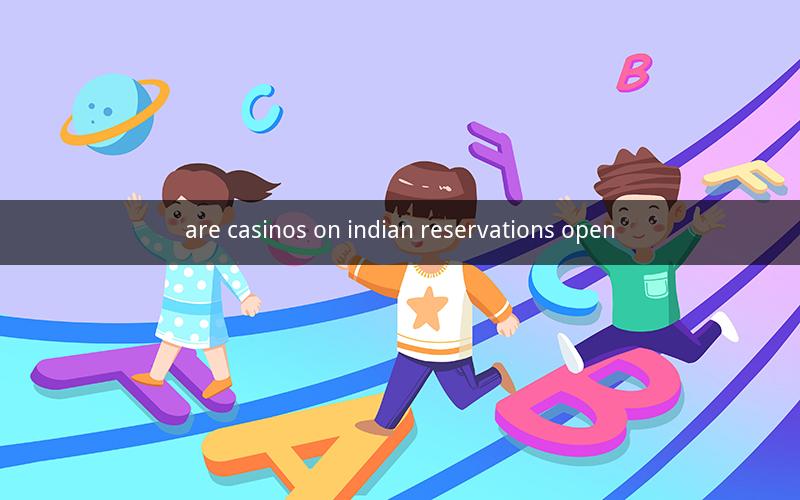
Contents
1. Overview of Casinos on Indian Reservations
2. The Legal Framework
3. Economic Impact
4. Community Benefits
5. Challenges and Concerns
6. Case Studies
7. Conclusion
1. Overview of Casinos on Indian Reservations
Casinos on Indian reservations have become a significant part of the gaming industry in the United States. These casinos, operated by Native American tribes, offer a wide range of games, including slots, poker, blackjack, and roulette. Over the years, they have become a major source of revenue for tribes and have had a significant impact on the local economy.
2. The Legal Framework
The legal framework governing casinos on Indian reservations is complex and has evolved over time. The Indian Gaming Regulatory Act (IGRA) of 1988 is the primary law that regulates gaming on tribal lands. It allows tribes to offer certain types of gaming if they enter into a compact with the state in which the reservation is located.
3. Economic Impact
Casinos on Indian reservations have had a significant economic impact on the United States. They have created thousands of jobs, generated millions in tax revenue, and stimulated economic growth in local communities. The casinos have also provided a source of income for tribes, allowing them to invest in education, healthcare, and infrastructure.
4. Community Benefits
The benefits of casinos on Indian reservations extend beyond economic gains. They have provided opportunities for tribal members to gain employment, receive training, and advance their careers. Additionally, the revenue generated from the casinos has been used to improve community facilities, such as schools, hospitals, and libraries.
5. Challenges and Concerns
Despite the benefits, casinos on Indian reservations also face challenges and concerns. Some argue that the casinos contribute to gambling addiction and other social problems. Others are concerned about the potential for conflict between tribes and neighboring communities. Additionally, the process of negotiating compacts with states can be contentious and time-consuming.
6. Case Studies
Several tribes have successfully operated casinos on their reservations. The following are a few examples:
Pala Band of Mission Indians: The Pala Casino in San Diego County, California, is one of the largest casinos in the United States. It has generated significant revenue for the tribe and has provided numerous jobs for tribal members.
Cherokee Nation: The Cherokee Nation operates several casinos in Oklahoma, including the Cherokee Casino and Hotel in Tulsa. These casinos have become a major tourist attraction and have contributed to the economic growth of the region.
Mashantucket Pequot Tribal Nation: The Mashantucket Pequot Tribal Nation operates the Foxwoods Resort Casino in Mashantucket, Connecticut. This casino is one of the most successful casinos in the United States and has generated billions in revenue for the tribe.
7. Conclusion
Casinos on Indian reservations have become an integral part of the gaming industry and the United States economy. While they offer numerous benefits, they also present challenges and concerns. As the industry continues to evolve, it will be important for tribes, states, and the federal government to work together to address these issues and ensure that casinos on Indian reservations continue to contribute positively to the economy and communities.
---
Questions and Answers
1. What is the Indian Gaming Regulatory Act (IGRA)?
- The Indian Gaming Regulatory Act (IGRA) of 1988 is the primary law that regulates gaming on tribal lands. It allows tribes to offer certain types of gaming if they enter into a compact with the state in which the reservation is located.
2. How many jobs have been created by casinos on Indian reservations?
- Casinos on Indian reservations have created thousands of jobs, providing employment opportunities for both tribal members and non-members.
3. What types of games are offered at casinos on Indian reservations?
- Casinos on Indian reservations offer a wide range of games, including slots, poker, blackjack, roulette, and more.
4. How has the revenue generated from casinos on Indian reservations been used?
- Revenue generated from casinos on Indian reservations has been used to improve community facilities, provide educational opportunities, and invest in healthcare.
5. What are some of the challenges faced by casinos on Indian reservations?
- Challenges include gambling addiction, social problems, potential conflict with neighboring communities, and the contentious process of negotiating compacts with states.
6. How do casinos on Indian reservations benefit the local economy?
- Casinos on Indian reservations stimulate economic growth by creating jobs, generating tax revenue, and attracting tourists.
7. What is the role of the federal government in regulating casinos on Indian reservations?
- The federal government plays a role in regulating casinos on Indian reservations through the Indian Gaming Regulatory Act (IGRA) and other laws.
8. How have casinos on Indian reservations impacted tribal communities?
- Casinos on Indian reservations have provided economic opportunities, improved community facilities, and allowed tribes to invest in education and healthcare.
9. What is a compact between a tribe and a state?
- A compact between a tribe and a state is an agreement that allows the tribe to offer certain types of gaming on its reservation.
10. How can states and tribes work together to address challenges related to casinos on Indian reservations?
- States and tribes can work together to address challenges by engaging in open dialogue, negotiating fair and equitable compacts, and implementing effective regulatory frameworks.